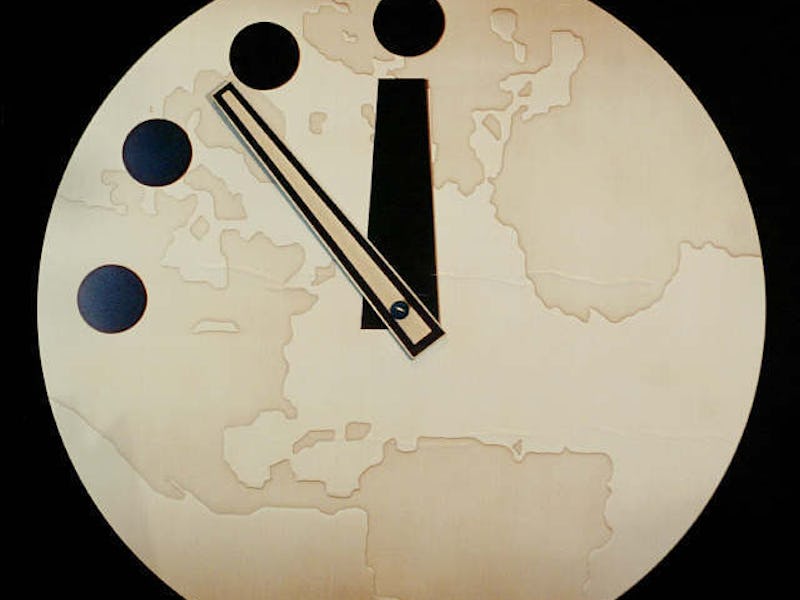The "Doomsday Clock" Is Now the Second-Closest to Midnight in History
It's a worrying sign for global stability.

For the first time in its history, the Bulletin of the Atomic Scientists moved its Doomsday Clock 30 seconds closer to midnight on Thursday, bringing the time to two-and-a-half minutes to midnight. That’s the second-closest the clock has ever been toward midnight, which is designed to represent how close the world is to global catastrophe and the first time the clock has moved by 30 seconds.
“Make no mistake, this has been a difficult year,” Rachel Bronson, executive director and publisher of the Bulletin of the Atomic Scientists, told a press audience at the National Press Club in Washington, D.C. “Over the course of 2016, the global security landscape darkened.” Bronson criticized “cavalier and reckless language” around nuclear threats and “growing disregard of scientific expertise.”
“The political situation in the United States is of particular concern,” said David Titley, a professor at Pennsylvania State University, who sits on the science and security board of the Bulletin of the Atomic Scientists.
With the rise of right-wing nationalism, it seems the established global order could be at stake. The UK chose to go forward with Brexit, the United States has Donald Trump, the Philippines have Rodrigo Duterte, and Marine Le Pen leads polls for the French presidency. All vowing to put their country first and withdraw from international institutions, it’s a stark departure from the years of consensus around global cooperation.
The clock, started in 1947, is intended to summarize the scientific community’s response to current global events and was initially intended to highlight the urgency around nuclear weapons at the time. The world was beginning to enter the Cold War, a tension that would grip the second half of the 20th century as new technologies led to fears that a humanity-ending war could break out. Starting at seven minutes to midnight, the clock jumped to two minutes in 1953 as the U.S. and the Soviet Union started developing a hydrogen bomb.
The clock has never reached the two-minute point again. Fans of Watchmen may remember the clock in the fictional universe marching towards midnight, with little hope of avoiding inevitable catastrophe. The real-life version has moved back several times, but only as global leaders took action to avoid world-ending events.
Trump said he wants to begin a new nuclear arms race, despite steps taken by previous administrations to reduce the nuclear capacity in the United States. Trump tweeted in December that “the United States must greatly strengthen and expand its nuclear capability until such time as the world comes to its senses regarding nukes.” He reiterated this in a statement to MSNBC: “Let it be an arms race.”
In the UK, a debate rages on about the effectiveness of the Trident weapons system. Last week, it emerged that an unarmed missile failed off the coast of Florida last year. The prime minister came under scrutiny after opposition leaders questioned whether she knew about the failure when parliament voted on renewal weeks after the failure.
Watch the announcement here: